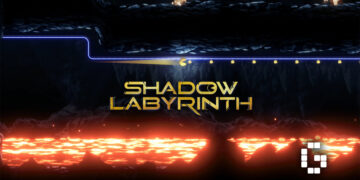With the Asus Zenbook Flip S OLED, the idea was to create a laptop that’s both portable and incredibly stylish. To this end, they’ve largely succeeded. The Flip S is pretty much one of the prettiest laptops I’ve ever laid eyes on, and I’m almost scared to approach it for fear it’s going to throw a drink in my face.
Seriously, it’s gorgeous, with its Red Copper accents and Jade Black finishing. But looks will only get you so far, and that’s why we’re going to look at exactly how much substance this stylish laptop has going for it.

| Display | 13.3″ OLED 4K UHD (3840 x 2160) 16:9 slim-bezel NanoEdge touchscreen 3.9 mm-thin side bezel |
| CPU | Intel Core i7-1165G7 Processor 2.8 GHz (12M Cache, up to 4.7 GHz, 4 cores) |
| GPU | Intel® Iris® Xe Graphics |
| Memory | 16 GB 4266 MHz LPDDR4x |
| Storage | 1 TB PCIe® NVMe™ 3.0 x4 M.2 SSD |
| Price | MYR 6,799 |
The Physicality Of It
One thing I really like about the Zenbook is that it’s really light. Like, I know it’s supposed to be an on-the-go-type laptop but its almost like an inverse PS5 at this rate. No matter how small and light I think it is, it’s somehow smaller and lighter.
I can really see myself heading out with this, since it’s not a total strain on the back to lug around. It’s also great to just do simple tasks like writing reports and checking email, since you can even use the touchscreen if you’re feeling too lazy to type.

One neat feature it has is its 180-degree screen, letting you do on-the-spot presentations for small groups or even flipping it all the way around to convert to a touchscreen tablet for doodling.
While the tablet mode is cool, I do feel a little uncomfortable since the keyboard on the “back” of the device is exposed. Holding it means you can feel yourself pressing down the keys, which isn’t a great feeling even though the laptop knows not to read it as an input.
This is also where the laptop’s size tends to work against it- the keyboard takes up the full width of the body, meaning there’s no hand placement where you’re not mashing keys. Similarly, the screen is so big and thin that there’s no buttons to press leading tablet mode to feel very restrictive since you’re limited to touch-options to control your experience.
But still though, if you’re just looking for a casual-use laptop, it’s got you covered. The tablet mode really does work for if you just need to scroll the news or do any kind of idle tasks, and it also makes the laptop take less space.
Display
As a device that’s great for chill moments, its not surprise the Zenbook has a great screen. It uses a 13.3″ FHD (1080p) OLED screen that’s even 4K enabled, and makes for some gorgeous viewing experiences as a result. Watching nature documentaries is a delight on this screen, as all the colors really tend to pop out. One thing I particularly noticed was it displays orange-ish colors really well, having objects like fire appear more than just reddish blobs on the screen.

Aside from the obvious use of watching programs on Netflix, this is also great for your presentations, since you can give your next work the stage it deserves with such a great display showing it off. It also has a pretty decent screen-to-body ratio, so you’ll really feel immersed as you won’t be boxed in by laptop borders.
Drawing
Now, one of the advantages of the Zenbook Flip S OLED is that hypothetically, it’s a great drawing tool. It comes bundled with the new Asus Pen, a stylus that lets you draw on the screen.
In practice, it’s a pretty great drawing tool, with the pen’s variable pressure inputs working well with many drawing softwares, letting you have many of the benefits of an external drawing tablet with the addded benefit of a single machine.

One gripe I do have is that the screen doesn’t seem to react to the pen all that well, making an uncomfortable feeling as the pen slides across the screen. I’m sure prolonged use won’t damage the screen but it’s hard to shake the feeling that it would, since most drawing tablets have a kind of seamless glide to them that this doesn’t.
There’s also the once again gripe of the fact that in full tablet mode, you literally have no buttons to press to switch between settings quickly. This is more of an idle doodling laptop, rather than “I’m going to create a piece of concept art before Starbucks throws me out”. It’s one of the biggest downsides, since I’m pretty sure there are a lot of digital artists who’d love for a stronger-than-a-tablet machine to do their art on, but without having to lug along external devices like a drawing tablet.

Technically you wouldn’t need buttons, sure, but for a lot of artists its an integral part of their workflow, so it feels strange to use this as a drawing tablet when that feature is blatantly missing. Stuff like changing brush sizes, even selecting new colors all take more time without some sort of shortcut button, so its really something you want to consider when marketing to the digital artist market.
That being said, I could totally see this being used by a uni student, since idle drawing is perfect for not paying attention in class, or just scribbling down quick notes. With all the restrictions of a single pen size/color, you can still create some great drawings on this.
Performance
I’m gonna be real with you- this isn’t a gaming laptop. It doesn’t have a dedicated GPU, instead using its built-in graphics card so that means don’t expect this to play anything remotely close to triple-A. Smaller indie games like Brawlhalla work out fine, but if you’re getting this and want to play PC games maybe reconsider because you’re going to be spending a lot of time checknig the minimum specs of every game you’re interested in.
We even tried Immortals: Fenyx Rising, and we could get it to run, at least. Running well is a whole other story, but the application opened and the game responded when you hit buttons.

Even running it through 3D Mark’s Timespy test, the results are, well, not great. That being said don’t take that to mean this is by any means a bad laptop- remember this test compares it against machines litereally purpose-built for gaming. It’s just that the Zenbook isn’t made for any kind of heavy-duty graphical processing, so if you’re looking to do any kind of gaming seriously give this one a miss to save yourself heartbreak.
Closing Thoughts

At the end of the day, the ZenBook Flip S really does do what it sets out to do, though I’m not entirely sure how well it lines up with its price point. At almost RM7000, it’s got decent RAM and an SSD, but not much else going for it. From the perspective of someone who’s covered a lot of gaming laptops, it seems strange to pay that much for something that can’t run games properly.
That being said though, many of these on-the-go type laptops tend to really just be portable computers, and the Zenbook Flip S is definitely leagues ahead of those models. Perhaps in its own league, this is what top of the line looks like.
After all, the SSD and high RAM mean you’ll be able to get quite a bit of work done on this, even if that work’s not game-related. On top of that, the laptop’s super light, so you really can carry it anywhere. Is that enough to offset the high price point? Your mileage may vary.
Review unit provided by Asus Malaysia













![[EXCLUSIVE] Creative Masterminds from Gearbox Software Reveal What Makes Borderlands 4 Worth the Wait](https://cdn.gamerbraves.com/2025/07/Borderlands-4-at-Bilibili-World-2025_Interview_FI-360x180.jpg)




![[ASIA EXCLUSIVE] Bringing Back a Classic: Inside the Making of FINAL FANTASY TACTICS – The Ivalice Chronicles](https://cdn.gamerbraves.com/2025/06/FFT-Ivalice-Chronicles_Interview_FI2-360x180.jpg)












